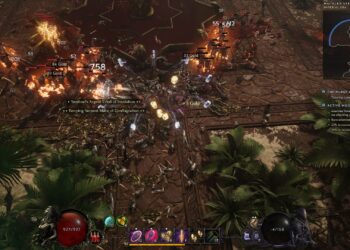Guide to Success in TCG Card Shop Simulator
In TCG Card Shop Simulator, you embark on an exciting journey to build and manage your own card shop. However, turning your aspirations into reality in just one day is out of reach. You’ll have to focus on purchasing products, drawing in new customers, and expanding your inventory to transition your empty store into a profitable business. Although the tasks may seem daunting, the primary goal remains clear: increase your revenue.
With various strategies and products available to boost your earnings, identifying the most profitable ones is critical. Which items yield the highest returns? This guide will delve into the best money-making tactics you’ll want to embrace as you navigate this thrilling simulation game.
Focus on Affordable and Bulk Products
Understanding customer behavior is key; they tend to buy more when they see a variety of items available. Therefore, it’s wise to concentrate on stocking affordable options like basic booster packs and card sleeves in the early stages of the game. Keeping your shelves well-stocked with these products creates a reliable way to generate income.
These low-cost items also require minimal display space, allowing you to sell them in larger quantities. During the early game, avoid heavy investments in expensive items that take up too much room, like board games. Instead, hold off on purchasing these until you have the licenses for bulk items.
When placing orders, remember to buy multiple items at once to cut down on shipping fees, and opt for larger bundles (64 units) to maximize savings.
Don’t Overlook Selling Individual Cards
Selling single cards can significantly boost your shop’s earnings. Aim to have at least three or four display tables dedicated to these cards. Before closing for the night, open booster packs and display the cards as singles. High-value cards can provide a considerable boost, especially early on.
Bear in mind not to price single cards too steeply. A profit margin of 10-20% is generally well-received by customers. For common or lower-value cards, consider pricing them at market value or adding a small markup.
During business hours, consistently monitor your display tables to ensure they remain stocked. Regularly refresh these tables, even if that means opening more booster packs or adding cards purchased from customers.
Leverage Deals from Customers Selling Cards
You’ll notice customers approaching your register with a little red exclamation mark, signaling they want to sell cards. Engage with them to see their offers and the prices they’re requesting.
Your goal in these exchanges is to purchase cards below market value. If a card is priced at $50, for example, propose an offer of $35. You can then resell for a margin of 10-20% over the market price. Just be careful not to lowball; if your offer is too low, customers might refuse to sell.
Sometimes, these negotiations allow for back-and-forth offers, so be prepared to adjust your bids gradually.
Manage Your Game Tables Wisely
At the onset, game tables won’t yield sizeable profits, but tracking player attendance is essential. More players mean you can host larger tournaments, which translates to extra income later on.
Although game tables take up space, don’t overcrowd your shop with them early on. Three to four tables are typically adequate. As your business expands, feel free to add more.
Furthermore, if customers are still at the tables near closing time, don’t rush to skip ahead to the next day. Allow games to finish; these individuals might still make purchases, possibly boosting your profits.
Broaden Your Product Selection
To attract diverse customers, enhancing your product variety is critical. Some customers may enter your shop searching for specific items, like a niche board game. Before expanding your inventory, ensure you have sufficient shelving; trying to cram too many products into a small space isn’t effective.
When your financial standing is solid, consider investing in double-sided shelves to maximize your space while offering a wider product assortment. Eventually, you might replace standard shelves with these optimized options.
If funds allow, look into obtaining licenses for new products. This investment will further diversify your offerings and draw in a larger customer base.
Effectively Control Growth and Staffing
As you consider expanding your shop, always keep an eye on your profits—growing too quickly can lead to increased rent and make it difficult to stay financially stable. Ensure consistent income before upgrading your space.
The same principle applies to hiring employees. Initially, workers may not be essential, given the associated costs. Low-wage employees tend to work slowly, which may hinder service during busy times.
Save hiring for when your shop is larger and you can handle a greater volume of customers. This approach will help maintain profitability while ensuring consistent growth.
In the later stages of the game, you’ll need staff to help streamline operations, especially cashiers. Prioritize hiring individuals with high work speeds to boost efficiency. You can also improve cashier efficiency by setting rounded prices, as this speeds up the checkout process.
Capitalize on Morning and Night Rushes
When starting a new day, your first task should always be to open your shop as quickly as possible. Procrastinating can lead you to miss out on early morning customers. Save any orders or organizational tasks for the evening when things decompress.
Similarly, if players are still at the tables at night, be patient before closing; wait for them to finish their games, as they might make purchases afterward. New customers may also arrive while they finish up.
By following these tips, you’ll be well on your way to building a thriving card shop in TCG Card Shop Simulator. Happy selling!






